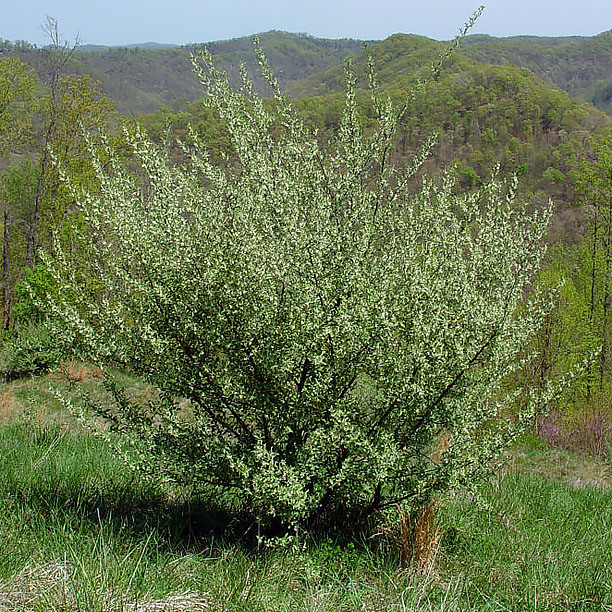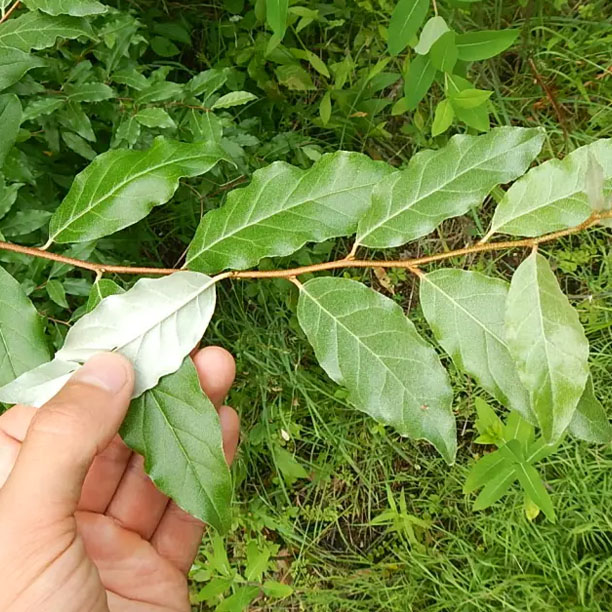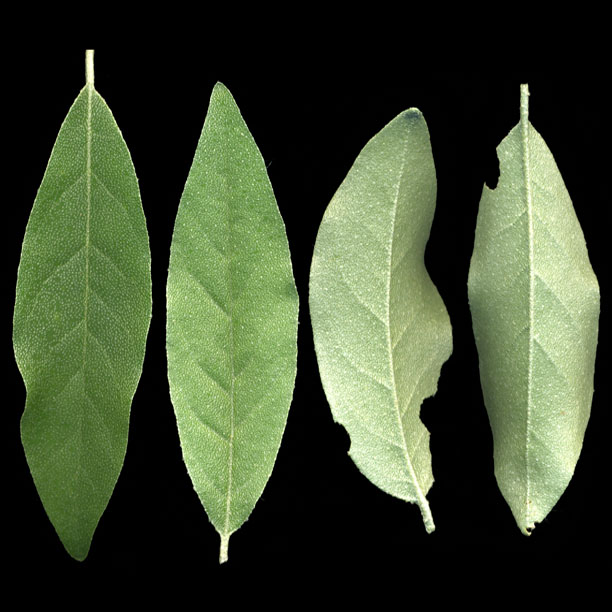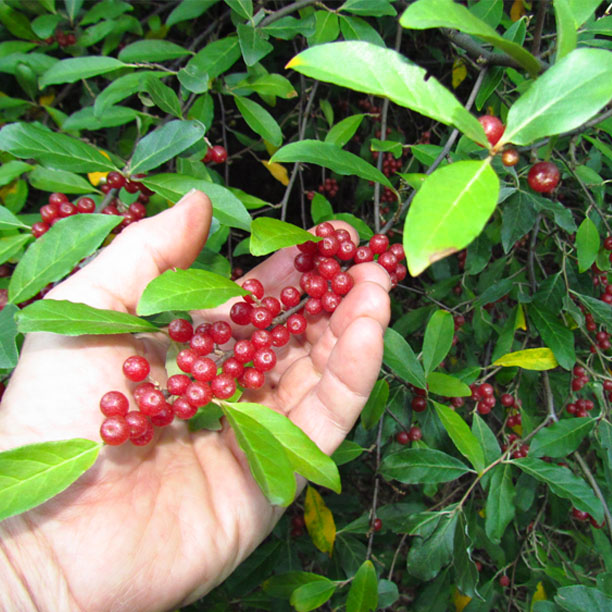Autumn Olive
How To Identify
Autumn olive is a small, deciduous tree that can grow up to 20 feet in height. It has alternate oval leaves, 1-3 inches long and about an inch wide with silvery undersides with the margins that are often crisped or wavy. The branches often have thorns. They have bell shaped creamy yellow flowers that ripen to red fruit in the fall. Native to China, Japan and Korea, it is considered an invasive plant in the United States. You may find these growing in groups where seeds have fallen to the ground or been dropped by birds or other small animals. When young and growing in groups they often look more like shrubs than trees.




Benefits
The berry of the autumn olive is a good source of vitamin C and vitamin E as well as a rich source of lycopene and has strong antioxidant properties.
How To Find
Autumn Olive can be found in the north from Maine south to Virginia and west to Wisconsin. It is normally seen in grasslands, fields, open woodlands and other disturbed areas. This tree is drought tolerant and can thrive in a variety of soil and moisture conditions. The silvery leaves are the first thing that sets them apart from their neighboring trees and plants. In the fall their silvery fruit turns red when ripe.
Gathering
Gather the fruits in the fall when fully ripe and red. These do have seeds which it is not recommended to just drop on the ground as they are considered an invasive species.
How To Use
Autumn olive fruit can be eaten raw being mindful of the seed. They can be squeezed or steamed into a delicious juice and are also often preserved as jams or jellies.
Preservation
Often eaten fresh, the fruit can be preserved using conventional methods as jams or jellies.